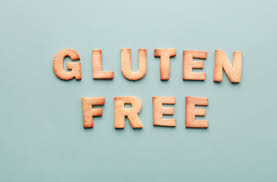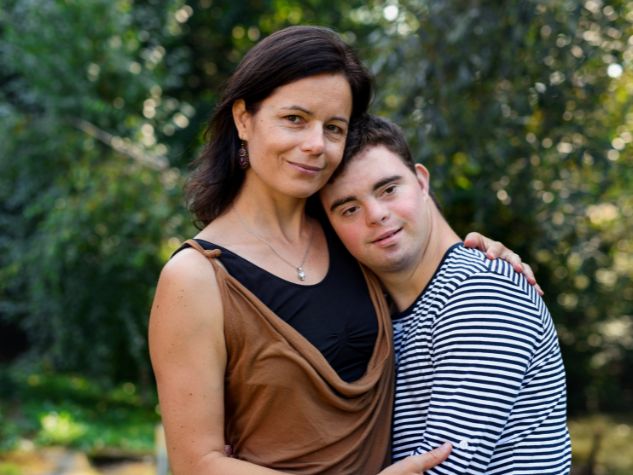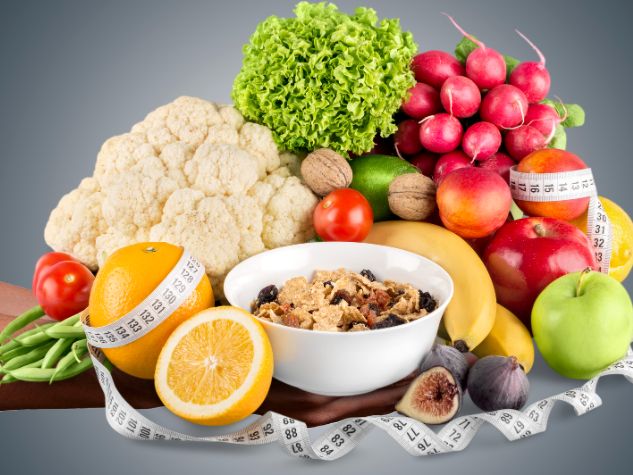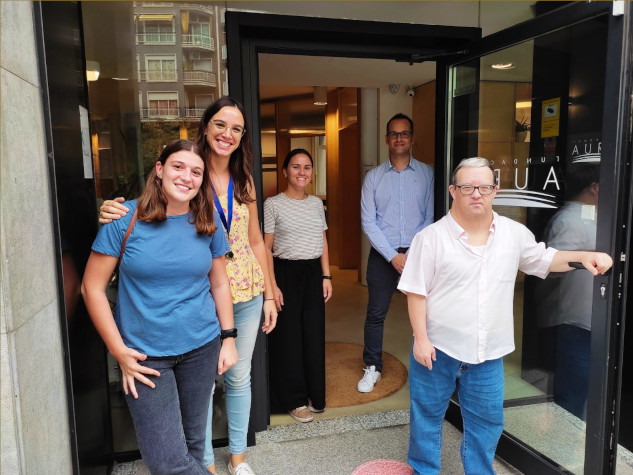What is coeliac disease?
Coeliac disease is a multisystemic, autoimmune-based pathology.
Multisystemic means that different organs can be affected. This means that extraintestinal symptoms can occur. Coeliac disease has always been associated with stomach pain, vomiting, nausea, diarrhoea… but it can also affect the skin and other neurological disorders.
On the other hand, the immune system is a complex network of cells, tissues and organs that has the ability to recognise foreign agents and attack them, thus protecting us against different pathogens. Sometimes, the autoimmune system mistakenly detects our own tissues and attacks and destroys them. This is how autoimmune diseases arise. Coeliac disease is caused by a failure of the immune system to respond.
COELIAC DISEASE is caused by the ingestion of gluten in genetically susceptible individuals.
The ingestion of gluten triggers an inflammatory reaction in the intestine. The intestine is the organ responsible for absorbing all nutrients through the intestinal microvilli. In the case of coeliac disease, the intestinal inflammation that occurs when the person eats gluten atrophies and destroys the microvilli. As a result, the intestine cannot absorb nutrients correctly and nutritional deficiencies will appear, as well as other damage such as stomach pain, diarrhoea, vomiting, nausea, etc.
The symptoms of coeliac disease vary depending on the stage of life in which we find ourselves. It can appear at any time of life.
| Childhood | Adolescent | Adult |
| Chronic diarrhoea | Asymptomatic | Iron deficiency anaemia |
| Loss of appetite | Loss of appetite | Abdominal pain, diarrhoea, gas |
| Abdominal distention | Growth failure | Headache |
| Weight loss | Delayed puberty | Irritable colon |
| Short stature | Menstrual irregularities | Infertility |
| Anemia | Pasty stools | Osteoporosis |
| Irritability/sadness | Rheumatoid arthritis | |
| Anxiety/depression |
Coeliac disease is said to be a chameleon-like disease because it can appear at any time in life, without having shown symptoms in earlier stages, and because of the diversity of its symptoms.
Coeliac disease is a genetic disease and is therefore not contagious.
The HLA-DQ2 and HLA-DQ8 haplotypes (sets of genes that are transmitted together) are associated with an increased predisposition to develop coeliac disease. HLA genes are genes that code for a part of the immune system that recognises foreign proteins.
Approximately 30% of the population has genetics compatible with coeliac disease, but only 1% of the population develops coeliac disease.
Relationship with coeliac disease and Down’s syndrome
Down’s syndrome is associated with dysregulation of the immune system. This results in an increased predisposition to infections, alterations in inflammatory mechanisms, abnormal responses to vaccination and a propensity to autoimmune diseases.
Coeliac disease is an autoimmune disease. According to different studies the prevalence of coeliac disease in people with Down’s syndrome is 8-12%.
The dysregulation of the immune response and the relationship between coeliac disease and Down’s syndrome can be explained by the fact that chromosome 21 contains genes that code for the immune system, although the mechanisms linking Down’s syndrome and coeliac disease are not well understood.
In Spain, in 2018 the Ministry of Health developed a “protocol for the early diagnosis of coeliac disease” in which people with Down’s syndrome are included as a risk group for coeliac disease. Children are routinely screened for coeliac disease. The only treatment is a gluten-free diet.
What is gluten?
Gluten is a protein that is present in the seeds of many cereals: wheat, barley, rye and oats. It is also present in their hybrids and derivatives: triticale, kamut and spelt.
It has no nutritional value, but has a high technological value. This means that it adds sponginess to breads and cakes.
In some foods, such as wheat starch, the gluten can be separated through a process called milling to obtain wheat starch suitable for coeliacs.
There are no intermediate terms, after diagnosis there are only 2 options: you have coeliac condition or you do not have coeliac condition. The only reference to “degrees” is in relation to the level of intestinal damage at the time of diagnosis.
The treatment is the gluten-free diet. It should be strict and lifelong and there may also be possible lactose withdrawal and nutritional supplementation.
Following treatment, the serology results normalise, the intestinal microvilli recover and the symptoms disappear. Even if you have few symptoms after skipping the diet, intestinal damage always occurs.
Classification of foods:
Generic: naturally gluten-free
Gluten-free grains: corn, rice, quinoa, millet, sorghum, buckwheat
Pulses, meat, fish, vegetables, fruit, animal and vegetable fats, eggs and dairy products.
Non-generic: may contain gluten due to their composition.
Conventional: because of their preparation or ingredients, they may contain gluten. Labels should be checked.
Sausages, spices, chocolates, snacks and pickles, ice cream, sweets, sauces, margarines and oils.
Specific: Made specifically for people with coeliac disease.
Pasta, pastries, biscuits, biscuits, flour, bread, pastries, beer, pizza.
Not suitable: Made with cereals containing gluten.
Pasta, pastries, biscuits, biscuits, flour, bread, pastries, beer, bulk foods.
In Spain there are two important regulations:
Regulation 169/2011 Mandatory declaration of allergens. Twelve allergens have been listed and all companies are obliged to declare them on their labelling.
Regulation 828/2014 Its use is not mandatory and is specific for gluten-free foods. It consists of labelling them as follows:
1) “GLUTEN FREE” for products containing <20 mg/kg of gluten.
2) “VERY LOW GLUTEN” for gluten content <100 mg/kg of gluten in the final product.
If you have coeliac disease, always look for the “GLUTEN-FREE” label.
There is also the registered trademark of the Barred Spike. This is a voluntary certification that shows the brand’s commitment to the collective. It favours the identification of gluten-free products and provides added safety.
Cross-contact
Cross-contact occurs when a food that does not contain gluten (vegetables, meat, dairy products, fruit or products made specifically for coeliacs) comes into contact with a food that does contain gluten. Then it is no longer suitable for people with coeliac condition.
Follow these tips to prevent cross-contact at home:
- Do not use wooden spoons for cooking. Use silicone or metal kitchen utensils.
- Do not fry gluten-free foods in oil previously used for frying gluten-containing foods.
- Eliminate gluten-containing flour and breadcrumbs from the pantry.
- Do not use kitchen towels – Use paper towels.
- Gluten-free foods should be kept separate from other foods and placed on top of gluten-containing foods, either in the fridge or in the cupboards. If possible, this should be labelled.
- Clean worktops with soap and water before cooking gluten-free foods.
- When using the microwave, always cover the gluten-free food dish with a lid.
- Always clean the inside of the oven first, and do not bake gluten and gluten-free food at the same time if you are using an air oven. Gluten-free products should always be placed on the top tray.
- Use heat-resistant bags for gluten-free foods to prevent them from coming into contact with the grill.
- Use a dedicated toaster for gluten-free foods.

















